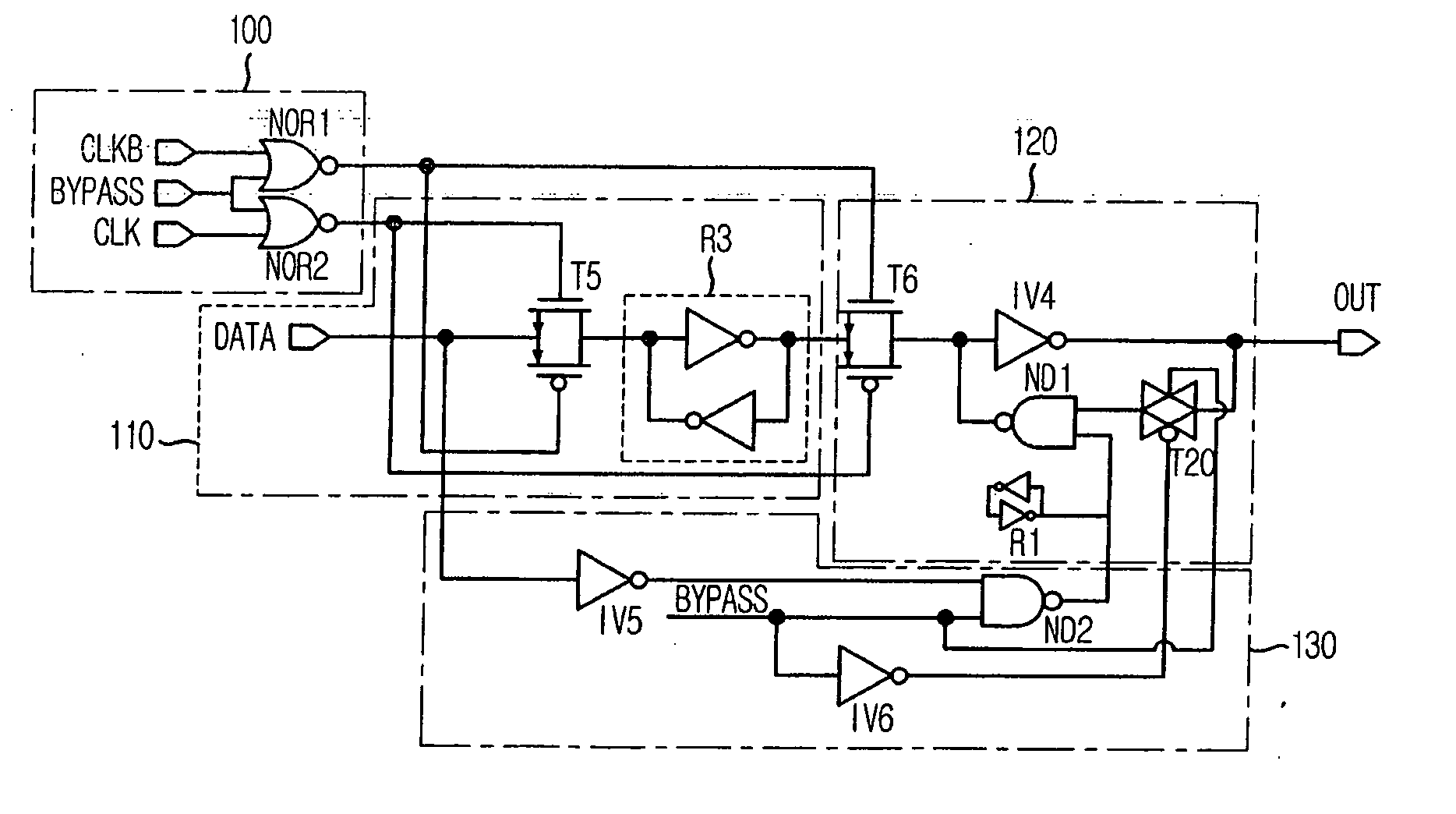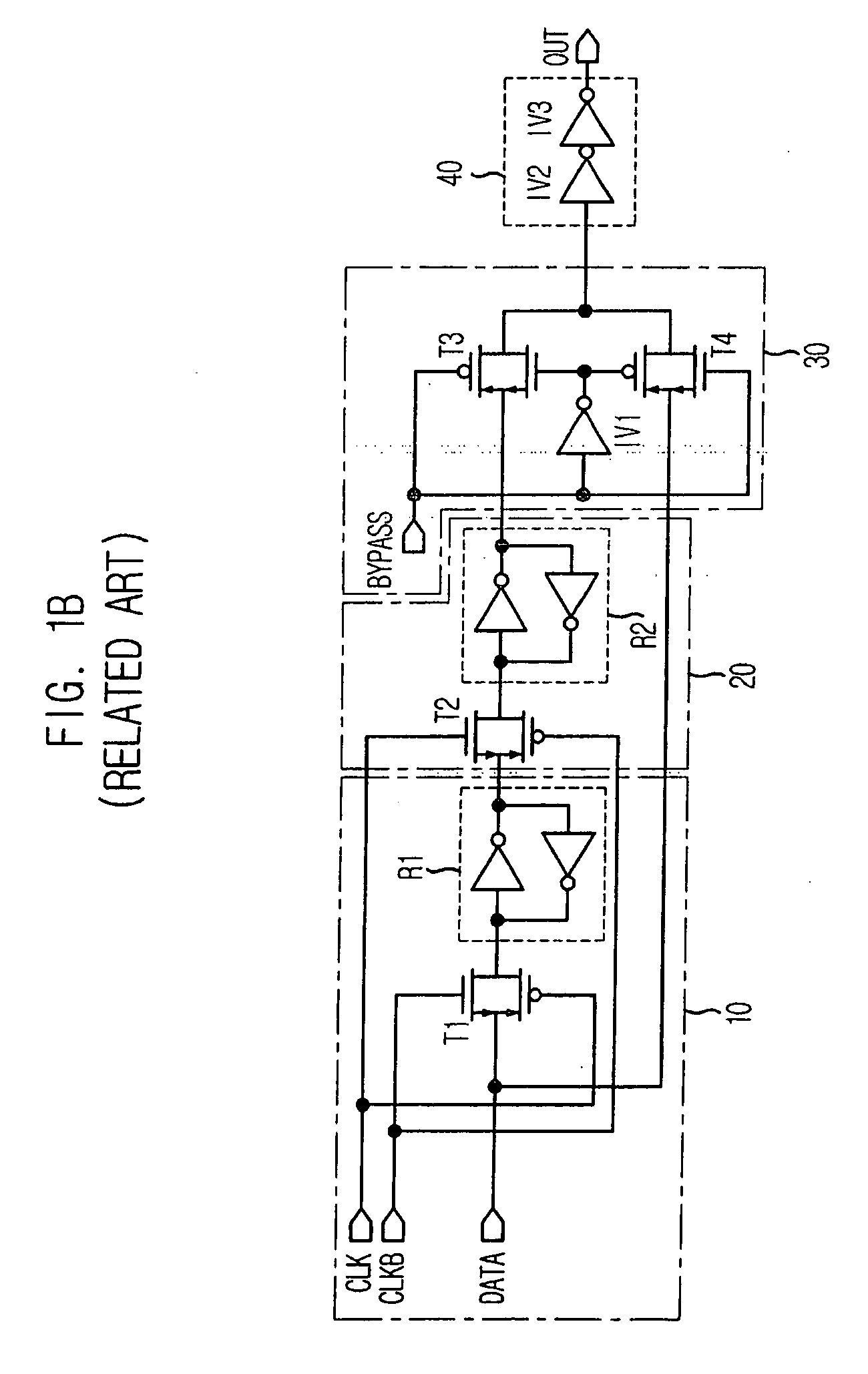Flip-flop circuit
a flip-flop circuit and circuit technology, applied in the field of flip-flop circuits, can solve the problems of large loading, unnecessarily large loading, and the signal path using the clocks clk and clkb is required to pass through the transmission gate tb>, and achieve the effect of high impedance state and achieve the stability
- Summary
- Abstract
- Description
- Claims
- Application Information
AI Technical Summary
Benefits of technology
Problems solved by technology
Method used
Image
Examples
Embodiment Construction
[0018] Hereinafter, a flip-flop circuit in accordance with the present invention will be described in detail with reference to the accompanying drawings.
[0019]FIG. 2 is a circuit diagram of a bypass flip-flop circuit in accordance with an embodiment of the present invention.
[0020] The bypass flip-flop circuit of the present invention includes an input controller 100, a latch portion 110, an output controller 120 and a latch controller 130.
[0021] As shown in FIG. 2, the input controller 100 is provided with NOR gates NOR1 and NOR2 for logically operating clocks CLK and CLKB and a bypass signal BYPASS, respectively. The NOR gate NOR1 NOR-operates the clock CLKB and the bypass signal BYPASS, and the NOR gate NOR2 NOR-operates the clock CLK and the bypass signal BYPASS.
[0022] The latch portion 110 is composed of a transmission gate T5 and a latch R3. The transmission gate T5 selectively allows an output of data DATA depending on outputs of the NOR gates NOR1 and NOR2. Applied to an ...
PUM
 Login to View More
Login to View More Abstract
Description
Claims
Application Information
 Login to View More
Login to View More - R&D
- Intellectual Property
- Life Sciences
- Materials
- Tech Scout
- Unparalleled Data Quality
- Higher Quality Content
- 60% Fewer Hallucinations
Browse by: Latest US Patents, China's latest patents, Technical Efficacy Thesaurus, Application Domain, Technology Topic, Popular Technical Reports.
© 2025 PatSnap. All rights reserved.Legal|Privacy policy|Modern Slavery Act Transparency Statement|Sitemap|About US| Contact US: help@patsnap.com



